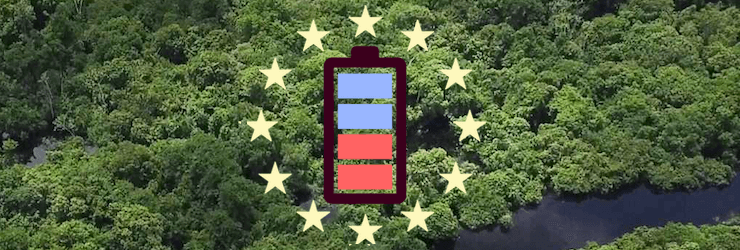Because water is the most vital element for life, many contemporary intellectuals expect it to be the most conflict-generating resource of the 21st century. Not water in general, which is present in most places in one form or another. Much rather, it is access to clean freshwater that counts. More than once, bilateral relations have suffered when one nation’s hydroelectric dam projects led to the another nation’s fear of water shortages due to shrinking flows in its incoming rivers. But declining water volumes in rivers and their negative environmental effects are also caused by large-scale agricultural irrigation, the cooling of power plants, and withdrawals for industry. Moreover, rivers suffer not only from depletion, but also from pollution. The key question is: in which form does the water that you extracted from the ground or a river get back to the local water body, and how is the global water cycle thus affected altogether?
Green and Blue Water Go to Virtual Water Concept
I’m sure you’ve read that one cup of coffee consumes 140 liters of water. This uses the concept of virtual water, as in indirectly caused water use through the consumption of a different product. However, the water that agricultural products like coffee require for their growth is not always the same water. When crops manage to grow in the desired way only with the help of the rain, they’re green-water-powered. Green water is the water that comes from natural precipitation. Irrigated crops, in turn, use blue water. Blue water is the water that comes from the ground, from a river, a lake or a dam. Most products include both types, green and blue. So when you’re interested in how water bodies are affected by the production of a certain product, it is important to know the share of green to blue water.
Green and blue are not the only colors commonly used to describe water. At the other end of the food chain, water turns gray and black.
Wastewater is Dark, Gray and Black
Wastewater managers differentiate between various types of polluted water. Say you take a shower with tap water. That water has already made a long journey and used a fair bit of energy to get to your bathroom. When it got extracted from the ground (yes, being blue water!), it was first treated in various ways. So before ground water becomes drinking water, it has already used energy to get pumped out of the ground and through membranes (reverse osmosis) or be bombarded with UV-rays to eliminate germs. The next step also uses energy, when the water is pumped from the source into the municipal pipeline system and gets distributed all across the settled area you live in. By the short time this drinking water has spilled over your body and found its way to the drain, it has fulfilled a transition from drinking water to wastewater. This type of water, and any other type of wastewater from domestic washing activities, is called graywater. On the other hand, there is water that was used to flush the toilet. This creates a different story that is called blackwater. No matter which color, domestic wastewater needs further treatment and that is mainly for two reasons: first, it contains germs and bacteria, and second, it is highly nutrient-rich. The former needs no further explanation, I guess, but the latter does.
The Destructive Nature of Nutrients
Nutrients are good for the human diet and for plant growth, but devastating for most ecosystems. How can something that benefits one plant be destructive for all plants? Well, it’s a question of concentration. To remain in balance, all ecosystems depend on a limited nutrient charge. Flora and fauna have adapted to a certain nutrient and temperature condition for ages. Now if nutrients like phosphorus, nitrogen and potassium, all of which are present in municipal wastewater, are swept into these water bodies, they cause a transformation of the ecosystem. This nutrient-caused transformation is called eutrophication. Not only do eutrophied water bodies suffer from enormous algae growth and decline in biodiversity, but they eventually also start to smell notably unpleasant.
Concerning water use in industry, the differentiation of wastewater is a bit more difficult.
Improved Industrial Wastewater Treatment through Process Management
Instead of only showering, doing your laundry and the dishes, and going to the toilet, like you do at home, the uses of industrial water are manifold. A big share of the water used for cooling evaporates through the factory’s chimney; that’s why engineers speak of cooling towers instead of chimneys. Only indirectly and after passing through the entire global water cycle, will this water come back to the water body from which it was extracted. On a human timescale, this is water that was irretrievably extracted. The cooling water that has not evaporated, in turn, often contains biocides to protect the pipes in the factory. Adding to this, it poses a risk to a water body’s eco-system simply because of its increased temperature. Apart from cooling, water is often used as a solvent, so at the end of the industrial process it either contains traces of solubles or of other solvents. Traditionally, these chemicals are filtered out in an “end-of-pipe” treatment, at least in the developed world. More effectively though, both economically and environment-wise, is a better process design that recuperates the solubles from the wastewater stream. Process optimization is the keyword. Another big concern is heavy metals.
More Important Than Extraction Volume: Impact on Water Body
Generally speaking, water quality in natural freshwater systems depends on the land use in surrounding areas, on the state of the connected ecosystems, plus the share of “new” water from wells, rain, upstream rivers, melting snow, or incoming ground water flows. The lower the water renewal rate, and the higher the pollution in the past, the more sensitive it is to further pollution. This logic applies not only to different geological and meteorological conditions, but also to seasonal fluctuations.
As you see, when it comes to water-wise environmental performance, it is not only about a certain volume of consumed water. What’s even more important than the actual cubic meters, is the condition of the water body and the quality of the waste water after your use, hence the actual impact on the ecosystem. As ever so often, it is essential to bear in mind the dynamic nature of nature.
ISO 14046: Standardized Water Footprinting Near Approval
For more than two decades, water footprints have been the step child of environmental accounting. The reasons are quite apparent when you realize that a majority of eco-innovators come from northern European countries where all-year precipitation provided abundant freshwater sources. Still, the development of water footprints is constantly making progress as life cycle assessment frameworks for water use take shape. ISO 14046, the water footprint guideline for products, reached the inquiry stage this year, which means it is close to an official approval projected for 2013. ISO 14046, not to be confused with the 14064 greenhouse gas emission accounting norm, is the last branch of ISO’s environmental management series (ISO 14000). For an overview of all these norms, see What’s What: Understanding the ISO 14000 Family Of Standards. In the meantime, check out the following papers and presentations on the challenges of water footprinting.
- Integrating Water Footprint and Life Cycle Assessment frameworks, Power Point-presentation by Manuele Margni, Anne-Marie Boulay, Sébastien Humbert and Cécile Bulle delivered in September 2012 at the “LCA XII” in Tacoma, Washington
- Water Footprinting: Can We Agree On What We Are Measuring?, Power Point-presentation by Sarah McLaren from New Zealand Centre for Life Cycle Management
- Assessing the Environmental Impacts of Freshwater Consumption in LCA (2009) by Stephan Pfister, Annette Koehler and Stefanie Hellweg from ETH Zurich (thanks to Yoann Mery for his reader comment)
Article image CC BY 2.0 by peasap.




.png)

